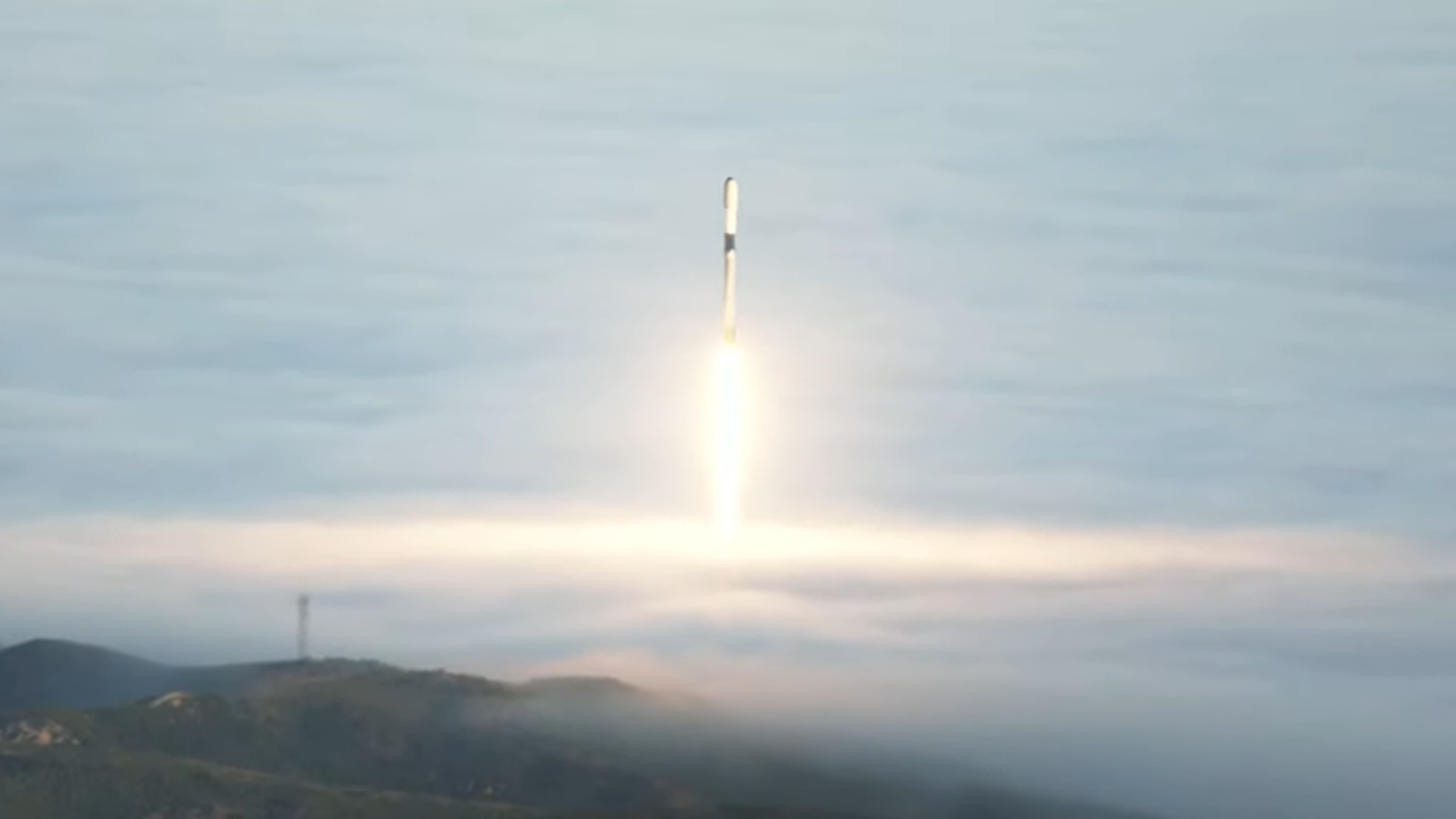SpaceX launches 46 Starlink satellites, lands rocket at sea after delay
SpaceX launched another big batch of its Starlink internet satellites and landed the returning rocket at sea on Thursday morning (April 27).
A Falcon 9 rocket carrying 46 Starlink spacecraft lifted off from California's Vandenberg Space Force Base Thursday at 9:40 a.m. EDT (1340 GMT; 6:40 a.m. local California time) after an abort over rocket landing concerns on April 26. The mission was also pushed back from April 25.
The launch took place flawlessly amid heavy fog conditions at Vandenberg.
Related: Starlink satellites: Everything you need to know
The Falcon 9 then came back to Earth for a landing about 8.5 minutes after liftoff, settling softly onto the deck of the SpaceX droneship Of Course I Still Love You, stationed off the California coast.
The mission was the 13th launch and landing for this particular booster, according to a SpaceX mission description. Impressive though that number is, it falls a bit short of SpaceX's booster reuse record of 15 flights.
The Falcon 9's upper stage, meanwhile, continued hauling the 46 Starlink spacecraft to low Earth orbit, where the Starlinks deployed about 59 minutes after liftoff.
Breaking space news, the latest updates on rocket launches, skywatching events and more!
Starlink is SpaceX's huge and ever-growing broadband megaconstellation. It currently consists of about 4,000 operational satellites, but that number could eventually balloon to more than 40,000.
Thursday's launch was the 27th mission of the year for SpaceX. The company also launched a high-profile non-orbital mission last week — the first-ever test flight of a fully stacked Starship, the giant vehicle that SpaceX is developing to get people and cargo to the moon, Mars and beyond.
Starship performed relatively well on the debut flight, which lifted off from SpaceX's Starbase facility in South Texas. The 394-foot-tall (120 meters) vehicle reached a maximum altitude of 24 miles (39 kilometers) before suffering several problems that impelled SpaceX to trigger a self-destruct high in the skies over the Gulf of Mexico.
Editor's note: This story was updated on April 26 to reflect the aborted launch try and the mission's new target to launch on April 27. The story was updated once again on April 27 to reflect the successful launch and Starlink deployment.
Mike Wall is the author of "Out There" (Grand Central Publishing, 2018; illustrated by Karl Tate), a book about the search for alien life. Follow him on Twitter @michaeldwall. Follow us @Spacedotcom, or on Facebook and Instagram.

Michael Wall is a Senior Space Writer with Space.com and joined the team in 2010. He primarily covers exoplanets, spaceflight and military space, but has been known to dabble in the space art beat. His book about the search for alien life, "Out There," was published on Nov. 13, 2018. Before becoming a science writer, Michael worked as a herpetologist and wildlife biologist. He has a Ph.D. in evolutionary biology from the University of Sydney, Australia, a bachelor's degree from the University of Arizona, and a graduate certificate in science writing from the University of California, Santa Cruz. To find out what his latest project is, you can follow Michael on Twitter.

